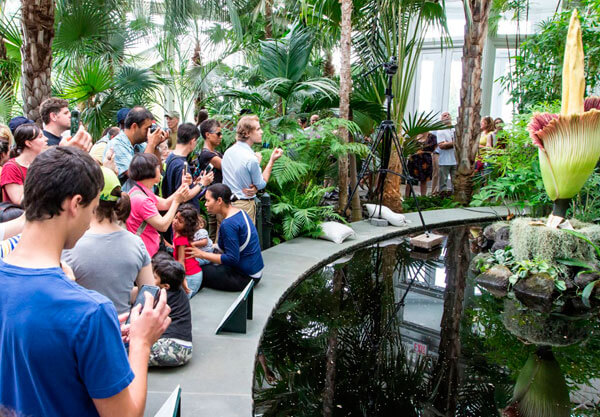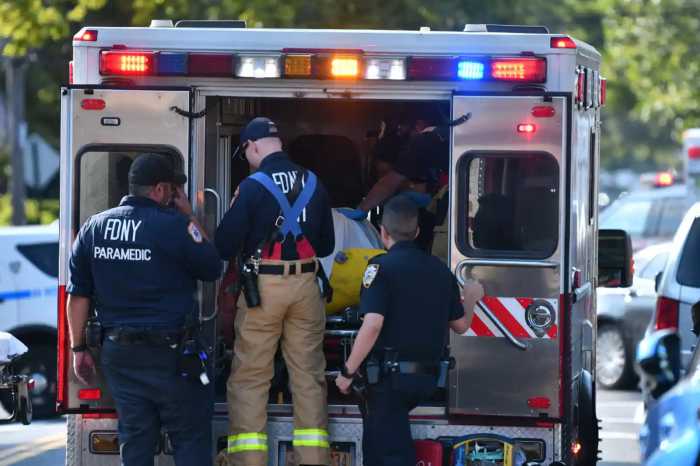In light of President Donald J. Trump’s alleged derogatory remarks about Haiti and African countries, a retired Vincentian-born public school teacher in Brooklyn says she was compelled to pay tribute to the Venerable Haitian Pierre Toussaint, who emerged from slavery to sainthood.
“Since the President of the United States referred to several countries as ‘s…hole countries,’ this writer has felt compelled to tell the story of someone who was brought here from one of those countries, and who made significant contributions in New York City,” writes Dr. Ann Sutherland, who retired from teaching in New York City public schools last October, in her contribution to the 36th anniversary journal of the Brooklyn-based St. Vincent and the Grenadines Ex-Teachers Association of New York.
Dr. Sutherland writes that the life of Toussaint “transcended from slavery to entrepreneur,” adding that “throughout all, he performed great acts of charity, helping to enhance the lives of those who were in need.”
According to saint
His great-grandmother, Tonette, was born in Africa and sold into slavery in the Caribbean, saint
It said Toussaint worked as a house slave inside a plantation owned by Jean Berard.
“He was educated by the family’s tutors, which was very unusual for the time,” saint
“There, in New York, Pierre was allowed to train as a hairdresser,” it added.
After his master died, Dr. Sutherland said Toussaint “made the commitment to take care of himself, his master’s widow and the other house slaves.”
His master’s widow died in 1807; and, shortly after her death, her second husband freed him to satisfy a promise made to her prior to her death, Sutherland writes.
She says Pierre then purchased the freedom of his sister, Rosalie; and, in 1811, that of a young lady, Juliette Noel, who was 20 years his junior and who later became his wife.
The couple also adopted Euphemia, the daughter of his sister Rosalie who had died of tuberculosis, Dr. Sutherland says.
She says Toussaint and his wife devoted their lives to helping the poor and needy in New York City, stating that “they worked hand-in-hand aiding refugees in finding jobs and raising funds for several orphanages.”
Dr. Sutherland says they also donated their own money to the Orphan Asylum in New York City and organized a credit bureau.”

Dr. Sutherland says Toussaint was well known to immigrants, especially those from Haiti, who sought his help when they arrived in New York City.
She says the couple took people who were suffering from yellow fever into their home and nursed them.
“They also crossed barricades to help isolated patients suffering from an outbreak of cholera,” Dr. Sutherland says.
In addition, she said Toussaint was “a staunch member of the Catholic Church.
“He was one of the benefactors of the multi-national Catholic school in New York City called St. Vincent de Paul,” says Dr. Sutherland, an active member of Our Lady of Miracles Catholic Church in Brooklyn, where she worships and serves as a catechist.
A catechist in the Catholic Church teaches religious instruction to children (Sunday School teacher), says Dr. Sutherland, who was recently named regional director of the Pro Sanctity Movement, a Roman Catholic movement, which encompasses Brooklyn and Queens.
She says Toussaint helped to raise funds needed to build the Old St. Patrick’s Cathedral on Mulberry Street in Manhattan.
Toussaint died June 30, 1853 at 87, two years after the death of his wife, Juliette.
Years after Toussaint’s death, Dr. Sutherland says different groups and individuals started to advocate for consideration for sainthood for Toussaint.
“They were met with almost no resistance; and, in 1991, Cardinal John O’Connor sent the necessary documents to the Vatican,” she writes. “The cardinal also ordered his body exhumed, examined and reinterred in the present location of St. Patrick’s Cathedral on Fifth Avenue, giving him the honor of being the first layman to be buried in the crypt below the main altar.
“This is a man who, throughout his lifetime, stood out as a model of virtues, who performed unselfish and extraordinary acts,” she adds. “The long process continues to the final declaration of sainthood for Pierre Toussaint.”
In 1996, Dr. Sutherland says Toussaint was named venerable, the second step in the process by Pope John Paul II.
“To those who are familiar with his great deeds, Pierre Toussaint continues to be a model of service for God and man,” Dr. Sutherland writes.


























